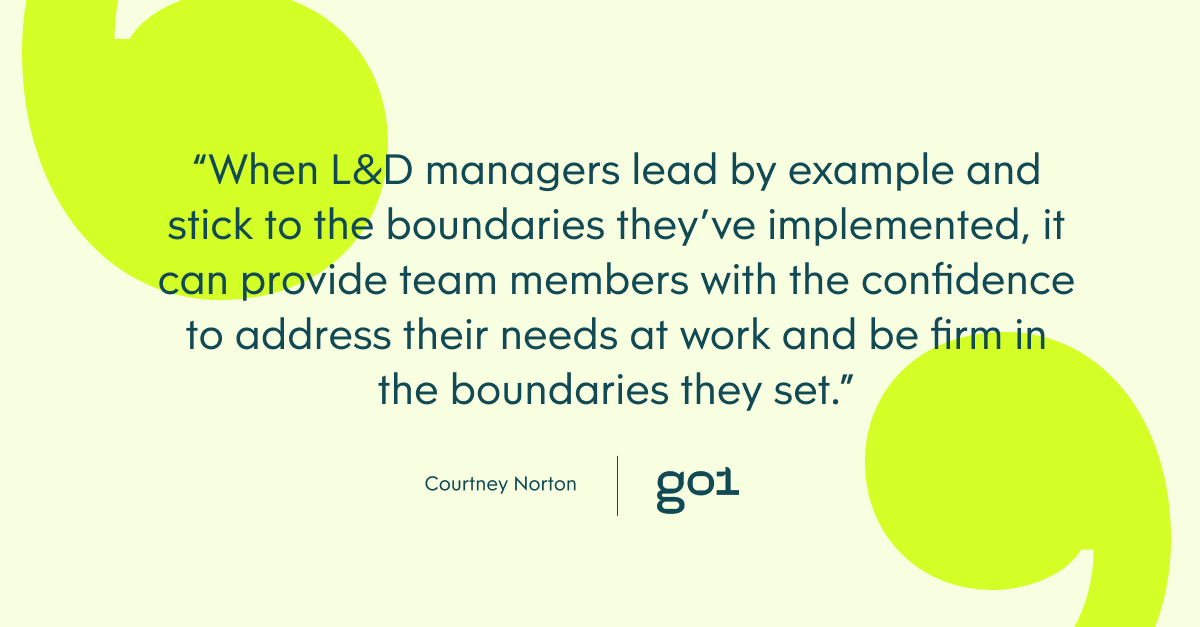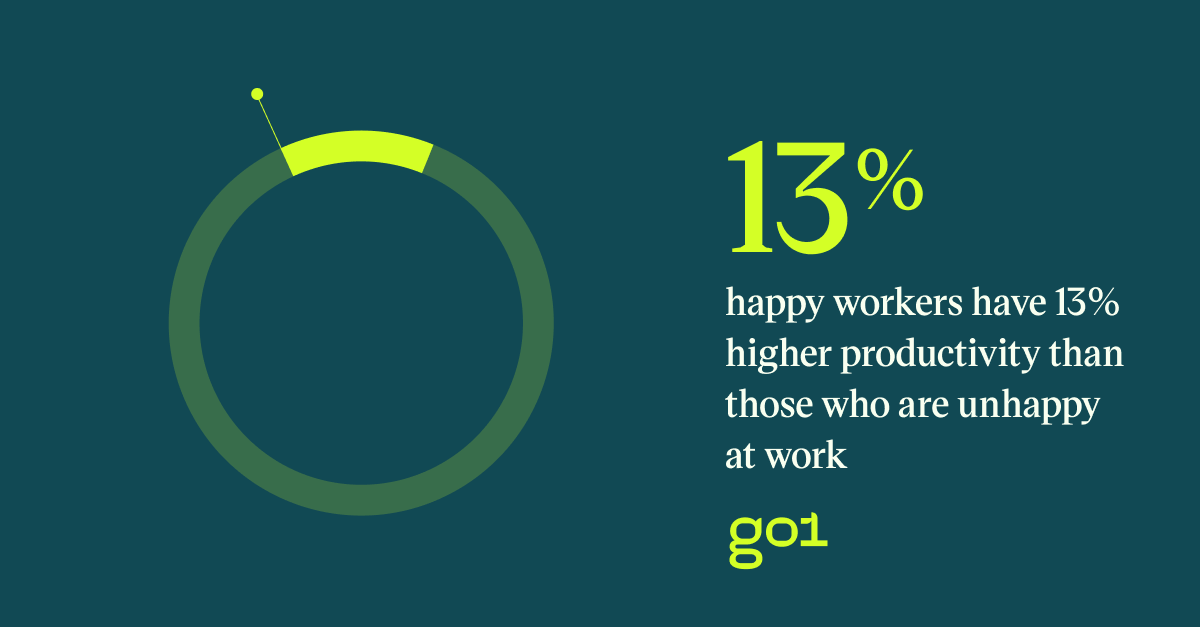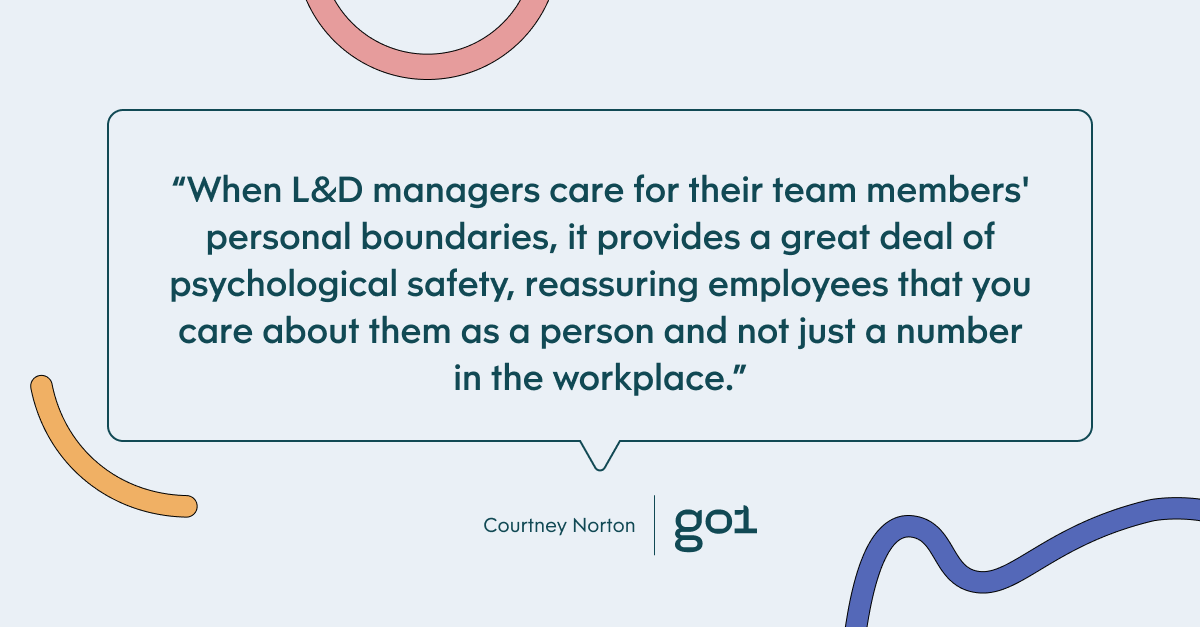
Setting boundaries at work: how L&D managers can help

A complicated work request while you're on vacation. Another ‘must do’ task when your workload is already overflowing. Personal questions that no one at your workplace really needs the answer to. If reading those scenarios made you shudder or roll your eyes, you may be part of the large number of workers that have had their boundaries crossed in the workplace.
There's no excuse for boundary-crossing to become part of your everyday work life. So, we’re going to guide you through the importance of setting boundaries at work as an L&D manager. In doing so, we'll help you set reasonable boundaries for you and your team, while also offering tips to maintain these boundaries in the long term.
Why L&D managers should be involved in setting boundaries
In recent years, we’ve seen a significant rise in the number of workplaces that value learning and development. With all the evidence pointing to the benefits of L&D, this is a level of enthusiasm we want to continue.

Therefore, involving L&D managers in the boundary setting process has many advantages. Not only will team members experience the benefits, but L&D managers will also be able to set better personal boundaries. When L&D managers lead by example and stick to the boundaries they’ve implemented, it can provide team members with the confidence to address their needs at work and be firm in the boundaries they set — even when it’s something they may have been nervous about previously.
Types of boundaries to set in your L&D team
There are three main categories of setting boundaries at work: job responsibilities, interpersonal boundaries, and personal boundaries. Let’s look at examples of each of these categories to help define the boundaries you might want to set in your team.
Job responsibilities
To set boundaries on job responsibilities, team members must be clear on exactly what their role involves. They should be able to answer the following questions:
- Who do you report to?
- Who provides you with feedback?
- Who decides what you should be working on?
- Who assigns you work?
If any of your team members are unclear on these questions, consider scheduling some one-on-one time to confirm the answers and discuss their job responsibilities. When everyone is clear on the specifics of their job responsibilities, it’s much easier to set and keep boundaries regarding your role at work. That way, if someone asks you to complete a task that falls outside of your role, you can set a clear boundary and tell them that isn't part of your job.
Interpersonal boundaries
Interpersonal boundaries are all about the relationships between your team members, as well as the relationships between you as a manager and your team. Examples of interpersonal boundaries at work include: the tone of voice used in the workplace, the attitude of your team members towards each other, limiting work conversation to appropriate topics, and maintaining professional conduct with colleagues you may not naturally get along with.
While reporting breaches of interpersonal boundaries to a manager can be an excellent step to establishing and maintaining boundaries, it may feel uncomfortable for employees to raise these concerns with you as an L&D manager. Accordingly, keeping an eye on your team members' interpersonal relationships is a great place to start. You can also conduct regular check-ins to ensure any breaches of interpersonal boundaries don’t get out of hand. Taking a proactive approach like this can even help stop breaches of interpersonal boundaries before they happen.

Healthy emotional boundaries are a significant factor in creating psychological safety in the workplace and can make all the difference in an employee feeling content at work. After all, happy workers are the best workers, with 13% higher productivity than those who are unhappy at work.
Personal boundaries
Many of us dream about having the perfect work-life balance. Personal boundaries separate our work and personal life and maintain that balance. Picture this: one of your team members has booked their dream holiday. They're taking a well-deserved two weeks off. However, they’re concerned about not being available to respond to work messages or missing something important while they're away. To help this team member feel confident in their boundaries, remind them that this is their time off from work and reassure them that they have no obligation to check work emails or messages while away.
To put their mind at ease, schedule some one-on-one time to go through any deadlines or tasks that may occur while they’re away and make a game plan to either move the deadline or for someone else to complete these tasks in their absence. You could also show them how to set an ‘out of office’ message on emails and other communication mediums. Further, encourage them to temporarily delete these applications while they're away if they’re installed on their personal phone.

When L&D managers care for their team members' personal boundaries, it provides a great deal of psychological safety, reassuring employees that you care about them as a person and not just a number in the workplace.
How to communicate boundaries clearly
Setting boundaries is fantastic, but boundaries are no use if they’re not communicated effectively throughout your team. While putting in the extra effort to communicate workplace boundaries may take L&D managers more time in the short term, the long-term benefits are well worth it.
One way to ensure effective communication is to repeat yourself. That doesn't just mean saying everything twice. For example, you may have mentioned in a team meeting that you will be at a conference the following week, so you won't be able to answer emails during that time. As much as people try to listen, it can be easy to miss these details. So, to reinforce it, send a follow-up email as a reminder and include details about who your team can contact if they have urgent enquiries while you’re away.
Another way to ensure that your boundaries are communicated is by leading by example. As an L&D manager, your team members look to you for how to conduct themselves at work. So, when you set boundaries, stick to them. If someone breaches them, remind them of your boundary, the reason you set that boundary, and how important it is that you keep that boundary. Chances are, they just had a simple slip of the mind. By reminding them of your boundary and sticking to it, you’re reinforcing clear communication and setting an excellent example for the rest of your team.
Sustaining the momentum: keeping boundaries at work
It’s no secret that the modern workforce can be difficult to keep up with. As such, things like maintaining boundaries can get forgotten as we're swept up in deadlines and other workplace priorities. However, by ensuring L&D managers help their team sustain long-term boundaries, rather than only implementing them when it’s convenient, the busy times can seem less overwhelming. As a result, team members can stay in the flow of their work for longer.
An effective way for L&D managers to implement this is by reminding team members of the boundaries you’ve set, while also reassuring them that it's okay to establish and reinforce their personal boundaries. In doing so, L&D managers can help team members feel like their boundaries are respected and encouraged rather than being a source of tension.
Of course, in any workplace, there are extenuating circumstances where certain boundaries (like a phone call outside of office hours) may need to be crossed. When these times arise, L&D managers should assure their employees that this sort of boundary-crossing will be rare. You can explain why it happened in this instance and any steps you will take to reduce these sorts of boundary-crossings in the future.
By demonstrating to your team members that you, as an L&D leader, care about their boundaries, you are showing that setting boundaries at work is a worthwhile effort.
To learn more, check out Go1's range of courses on setting boundaries in the workplace, including an excellent module on why boundaries are the secret to success at work and home.
For more insights, be sure to subscribe to the Go1 newsletter to stay on top of all the latest L&D trends. Or, you can book a demo today to find out how Go1 can help with your team’s learning needs.



